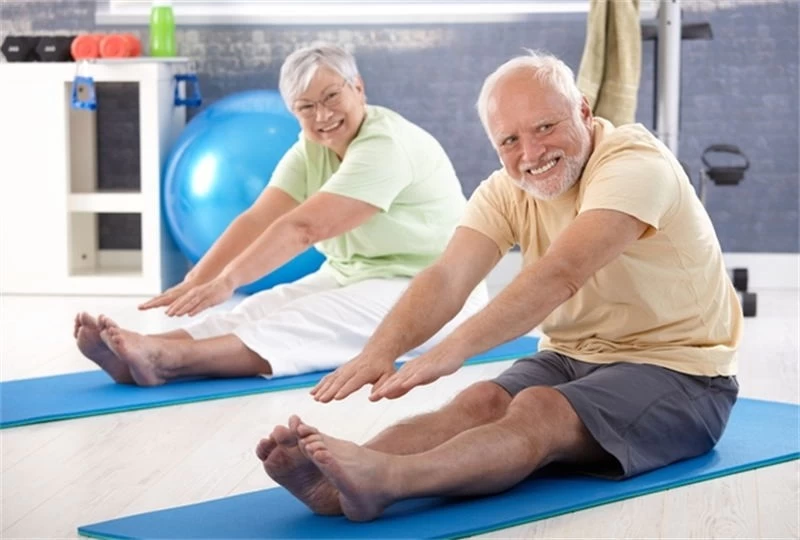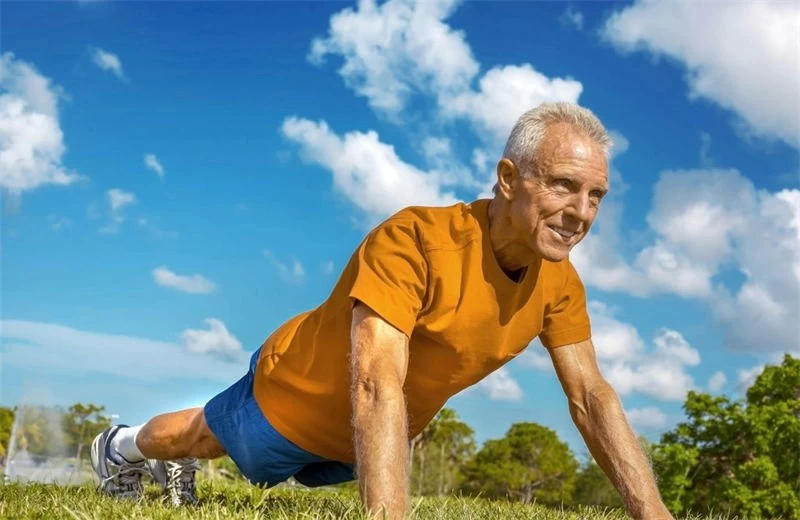Strength training isn't just for bodybuilders and marathoners. It's for anyone who wants to feel healthier, more energetic and, yes, younger.
"Strength is the fountain of youth," says Gavin McHale, a Winnipeg-based kinesiologist and certified exercise physiologist
who works primarily with older adults. "Benefits of resistance training, and subsequent strength gains, in older adults include better control of symptoms of chronic disease, pain and depression, as well as prevention of falls, maintaining existing muscle mass, improving posture and stability, increasing bone density and remaining functional." For instance, a 2015 Experimental Gerontology study of men and women ages 65 to 97 in retirement care facilities found that performing strength exercises just two times a week for six months significantly improved participants' mobility and functional performance. The result: a longer and, most importantly, fuller life.
After all, as we age, while we naturally lose some muscle mass because our muscles become less sensitive to dietary protein's muscle-building ways and changing hormones, a decline in physical activity is the biggest culprit. Called sarcopenia, this loss of muscle – which begins around age 50 – is linked with low bone-mineral densities, falls, fractures and insulin resistance, which may be an early sign of early Alzheimer's disease, according to recent research published in Diabetologia.
Luckily, virtually everyone is able to complete strength exercises, as long as they take into account their personal health rather than the number of candles on their birthday cake. "I have clients that are 25 years of age that may need more modifications than 70-year-olds who have been working out their whole life," says Briana Klein, exercise scientist and founder of Roots of Integrity Holistic Fitness in Chicago. Meanwhile, strength training has helped one of her clients with existing Parkinson's disease manage her condition and ease symptoms. Everyone has a different starting point.
"Start small. Some is better than none, more is better than some," McHale says. If you have any limiting conditions such as bad knees, hypertension or a replaced joint, talk to you doctor before beginning any exercise routine.
1. Lying Hip Bridges
These work your glutes, your body's largest muscle group, while also opening up the hips, McHale says. The hips can get especially tight in people who find themselves spending hours sitting throughout the day.
2. Squats to Chair
Among the most functional exercises around, squats strengthen the entire lower body and core to help you take stairs, pick things up off the floor and get out of chairs without struggle into old age, he says.
3. Wall Push-Ups
4. Side Lying Circles
This little move has big benefits: It strengthens your hips while improving mobility through the joint, she says.
5. Quadruped Opposite Arm and Leg Balance
This exercise is great for improving balance, coordination and strength in the back and abdominals, she says.
6. Deadbugs
They have a funny name, but they'll seriously help you improve your core stability for greater balance and all-over strength, McHale says.
7. Side Planks
This plank variation will improve side-to-side core stability as well as strengthen your shoulder, a joint that can give many older adults problems, he says.
8. Wall Angels
Ease back pain and improve your posture by opening your chest and working your shoulders with these simple against-the-wall moves, he says.



